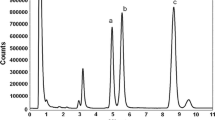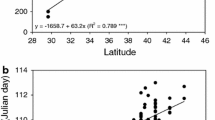Abstract
Pepper accessions with promising adaptations to the Korean growing environment were selected from Capsiucm annuum, C. frutescens, C. baccatum, and C. chinense. ‘Cherry Sweet,’ ‘Papri Sweet,’ and ‘Papri Mild’ accessions of C. annuum were selected for their fresh fruit quality. The fruit of ‘Cherry Sweet’ and ‘Papri Mild’ matured into a bright red color, with a high American Spice Trade Association (ASTA) color value, while the fruit of ‘Papri Sweet’ was characterized by a good taste and chewing texture. KC01299, KC01333, KC01338, and KC01345 accessions of C. frutescens had relatively low ASTA color values, but were highly pungent with a capsaicinoid content similar to or higher than Tabasco (375.5 mg·100 g−1) and 3 to 5 times that of ‘Cheongyang’ (103.3 mg·100 g−1), which is a popular Korean hot pepper cultivar. The three selected C. baccatum accessions (KC01739, KC00625, and KC00628) were tolerant to powdery mildew and viruses, with KC01691 and KC00625 having high sugar content. A good diversity in fruit shape and chemical quality components was found among the selected C. chinense accessions. The fruit of KC01693 (with a temporary RDA genebank number 800080) were light emerald green when immature and ivory to ripe apricot color when mature, with a high sweet taste and the characteristic aroma of C. chinense. The mature fruits contained similar levels of capsaicinoids as ‘Cheonyang,’ and had the highest sugar content of all tested accessions in this study. The red and orange lines bearing Korean chile pepper type fruits with tolerance to powdery mildew and viruses were selected from PI224445 (KC00163). The red fruit selection had the highest ASTA color value among all tested accessions, with the appropriate pungency for making Korean Kimchee. Bhut Jolokia had the highest ranking for capsaicinoid content, but its fruit set was poor. A red Habanero, KC01787, was selected for productivity, high capsaicinoid content, and tolerance to viruses in the field.
Similar content being viewed by others
Literature Cited
Andrews, J. 1995. Peppers: he domesticated capsicums. 4th ed. Austin, University of Texs Press.
American Spice Trade Association (ASTA). 1986. Official analytical method of the American Spice Trade Association; ASTA analytical method 20.1. 2nd ed. American Spice Trade Assoc., USA.
Attuquayefio, V.K. and K.A. Bukle. 1987. Rapid sample preparation method for HPLC analysis of capsaicinoids in Capsicum fruits and oleoresins. J. Agri. Food Chem. 35:777–779.
Baral, J.B. and P.W. Bosland. 2002. Genetic diversity of a Capsicum germplasm collection from Nepal as determined by randomly amplified polymorphic DNA markers. J. Amer. Soc. Hort. Sci. 127:318–324.
Ben Chaim, A., Y. Borovsky, M. Falise, M. Mazourek, B.C. Kang, I. Paran, and M. Jahn. 2006. QTL analysis for capsaicinoid content in Capsicum. Theor. Appl. Genet. 113:1481–1490.
Bennett, D.J. and G.W. Kirby. 1968. Constitution and biosynthesis of capsaicin. J. Chem. Soc. C:442–446.
Blum, E., M. Mazourek, M. O’Connell, J. Thorup, K. Liu, M. Jahn, and I. Paran. 2003. Molecular mapping of capsaicinoid biosynthesis genes and quantitative trait loci analysis for capsaicinoid content in Capsicum. Theor. Appl. Genet. 108:79–86.
Bosland, P.W. and J.B. Baral. 2007. ‘Bhut Jolokia’ — The world’s hottest known chile pepper is a putative naturally occurring interspecific hybrid. HortScience 42:222–224.
Charles, S.J., B.C. Kang, K. Liu, M. Mazourek, S.L. Moore, E.Y. Yoo, B.D. Kim, I. Paran, and M.M. Jahn. 2005. The Pun1 gene for pungency in pepper encodes a putative acyltransferase. Plant J. 42:675–688.
Charles, S.J., M. Mazourek, G.M. Stellari, M. O’Connell, and M. Jahn. 2007. Genetic control of pungency in C. chinense via the Pun1 loucs. J. Exp. Bot. 5:979–991.
Costa, F.R., T.N.S. Pereira, A.P. Vitoria, K.P. Campos, R. Rodrigues, D.H. Siva, and M.G. Pereira. 2006. Genetic diversity among Capsicum accessions using RAPD markers. Crop Breeding Applied Biotechnol. 6:18–23.
Curl, A.L. 1962. The carotenoids of red bell peppers. J. Agr. Food Chem. 10:504–509.
Curl, A.L. 1964. The carotenoids of green bell peppers. J. Agr. Food Chem. 12:522–526.
Deshpande, R.B. 1934. Studies in Indian chillies: (4) inheritance of pungency in Capsicum annuum L. Ind. J. Agr. Sci. 5:513–516.
Greenleaf, W.H. 1986. Pepper breeding, p. 67–134 In: M.J. Basset (ed.). Breeding vegetable crops. AVI Pub. Co., Inc., Westport, Connecticut, U.S.A.
Gregory, G.K., T.S. Chen, and T. Philip. 1987. Quantitative analysis of carotenoids and carotenoid esters in fruits by HPLC: Red bell peppers. J. Food Sci. 52:1071–1073.
Guzman, I., S. Hamby, J. Reomero, P.W. Bosland, and M.A. O’Connell. 2010. Variability of carotenoid biosynthesis in orange colored Capsicum spp. Plant Sci. 179:49–59.
Huh, J.H., B.C. Kang, S.H. Nahm, S. Kim, K.S. Ha, M.H. Lee, and B.D. Kim. 2001. A candidate gene approach identified phytoene synthase as the locus for mature fruit color in red pepper (Capsicum spp.). Theor. Appl. Genet. 102:524–530.
Hurtado-Herandez, H. and P.G. Smith. 1985. Inheritance of mature fruit color in Capsicum annuum L. J. Hered. 76:211–213.
Jeong, J.W., J.M. Seong, K.J. Park, and J.H. Lim. 2007. Quality characteristics of semi-dried red pepper (Capscium annuum L.) using hot- air drying. Korean J. Food Preserv. 14:591–597.
Kim, J.H., M.C. Cho, Y.I. Cho, H.E. Lee, W.H. Kang, J.G. Woo, and Y.K. Ahn. 2012. Evaluation of horticultural characteristics in F6 RIL populations for research to quality-determining traits in chilli pepper. Korean J. Breeding Sci. 44:547–558.
Kim, K.Y., Y.A. Shin, J.W. Lee, T.R. Kwon, Y.C. Kim, D.S. Jeong, J.S. Lee, and H.Y. Jeon. 2001. Standard growing manual for pepper. 115. Rural Development Administration, Suwon, Korea p. 261.
Kim, M.W. 2000. Molecular cloning and expression analysis of cDNA clones differentially expressed in placenta of pungent and nonpungent pepper. M.S. degree thesis, Seoul National University, Seoul, Korea.
Kim, S., J.B. Park, and I.K. Hwang. 2002. Quality attributes of various varieties of Korean red pepper powders (Capsicum annuum L.) and color stability during sunlight exposure. J. Food Sci. 67:2957–2961.
Kim, S., J.B. Park, and I.K. Hwang. 2004. Composition of main carotenoids in Korean red pepper (Capsicum annuum L.) and changes of pigment stability during the drying and storage process. J. Food Sci. 69:39–44.
Kim, S.H., Y.H. Kim, Z.W. Lee, B.D Kim, and K.S. Ha. 1997. Analysis of chemical constituents in fruits of red pepper (Capsicum annuum L. cv. Bugang). J. Korean. Soc. Hort. Sci 38:384–390.
Korea Seed and Variety Service. 2014. Instructions for characterization of crop plants. http://www.seed.go.kr.
Ku, K.H., N.Y. Kim, J.B. Park, and W.S. Park. 2001. Characteristics of color and pungency in the red pepper for Kimchi. Korean J. Food Sci. Technol. 33:231–237.
Kwon, M.J., Y.S. Song, and Y.O. Song. 1998. Antioxidative effect of Kimchi ingredients on rabbits red cholesterol diet. J. Korean Soc. Food Sci. Nutr. 27:1189–1196.
Lang, L.Q., S. Yanagawa, T. Sasanuma, and T. Sasakuma. 2004. Orange fruit color in Capsicum due to deletion of capsanthin-capsorubin synthesis gene. Breed. Sci. 54: 33–39.
Lee, H.D., M.H. Kim, and C.H. Lee. 1996. Relationships between the taste components and sensory preference of Korean red peppers. Korean J. Food Sci. Technol. 24:266–271.
Lee, O.H., H.S. Hwang, J.Y. Kim, J.H. Han, Y.S. Yoo, and B.S. Kim. 2001. A search for sources of resistance to powdery mildew (Leveillula taurica (Lev.) Arn) in pepper (Capsicum spp.). Kor. J. Hort. Sci. Tech. 19:7–11.
Lee, S.M., J.B. Park, S. Kim, and I.K. Hwang. 2003. The changes of capsaicinoids and ASTA color value of red pepper powder packed with different packaging materials. J. Korean Soc. Food Cookery Sci. 19:439–446.
Lee, S.S. and Y.J. Surh. 1995. Capsaicin, a double-edged sword: toxicity, metabolism, and chemopreventive potential. Life Sci. 56:1845–1855.
Lefebvre, V., A. Pallox, C. Caranta, and E. Pochard. 1995. Construction of an intraspecific integrated linkage map of pepper using molecular markers and doubled haploid progenies. Genome 38:112–121.
Mario, P.G., A.G.H. Vitor, C.M.C. Ma, and P.V. Cecilia. 2004. Physiological characterization of mamzano hot pepper (Capsicum pubescens R&P) landrace. J. Amer. Soc. Hort. Sci. 129:88–92.
McLeod, M.J., S.I. Guttman, W.H. Eshbaugh, and R.E. Rayle. 1983. An electrophoretic study of evolution in Capsicum (Solanaceae). Evolution 37:562–574.
Newman, A.A. 1953. Chemisty of capsaicin-the pungent principle of the Capsicum pepper. Prod. Chem. News. 16:413–418.
Paterson, A.H., E.S. Lander, J.D. Hewitt, S. Peterson, S.E. Lincoln, and S.D. Tanksley. 1988. Resolution of quantitative traits into Mendelian factors by using a complete linkage map of restriction fragment length polymorphisms. Nature 335:721–726.
Pickersgill, B. 1997. Genetic resources and breeding of Capsicum spp. Euphytica 96:129–133.
Suzuki, K., T. Kuroda, Y. Miura, and J. Murai. 2003. Screening and field trials of virus resistant sources in Capsicum spp. Plant Dis. 87:779–783.
Suzuki, T. and K. Iwai. 1984. Constituents of red pepper species: Chemistry, biochemistry, pharmacology and food science of the pungent principle of Capsicum species, p. 228. In: A. Brossi. (ed.). The alkaloids: Chemistry and pharmacology, Vol. 23. Academic Press, Orlando, FL.
Thompson, R.Q. and L. Kathleen. 2011. Applications of argentation solid phase extraction to the capsaicinoids: Purification of commercial standards and isolation of homodihydrocapsaicin (8-methyl) from ‘Bhut Jolokia’. Food Chem. 126:1424–1430.
Tsuchiya, H. 2001. Biphasic membrane effects of capsaicin and active component in Capsicum annuum species. J. Ethnopharmacology 75:295–200.
Wall, M., C.A. Waddell, and P.W. Bosland. 2001. Variation in β-carotene and total carotenoid content in fruits of Capsicum. HortScience 36:746–749.
Yazawa, S., N. Suetome, K. Okamoto, and T. Namiki. 1989. Content of capsaicinoids and capsaicinoids-like substances in fruit of pepper (Capsicum annuum L.) hybrids made with ‘CH-19’ as a parent. J. Jap. Soc. Hort. Sci. 58:601–607.
Yoon, J.B. 2003. Identification of genetic resources, interspecific hybridization and inheritance analysis for breeding pepper (Capsicum annuum) resistant to anthracnose. Ph.D. Thesis, Seoul Natl. University, Seoul, Korea.
Young, K.W. and K.J. Whittle. 1985. Color measurement of fish minces using Hunter L, a, b values. J. Sci. Food Agric. 36:383–392.
Yuni, W., A.R. Ballester, E. Sudarmonowati, R.J. Bino, and A.G. Bovy. 2011. Metabolite biodiversity in pepper (Capsicum) fruits of thirty-two diverse accessions: Variation in health-related compounds and implications for breeding. Phytochemistry 72:1358–1370.
Author information
Authors and Affiliations
Corresponding author
Rights and permissions
About this article
Cite this article
Mo, Hs., Jang, Ks., Hwang, Je. et al. Horticultural and chemical quality characterization of accessions selected from four species of Capsicum . Hortic. Environ. Biotechnol. 56, 54–66 (2015). https://doi.org/10.1007/s13580-015-0078-0
Received:
Revised:
Accepted:
Published:
Issue Date:
DOI: https://doi.org/10.1007/s13580-015-0078-0




